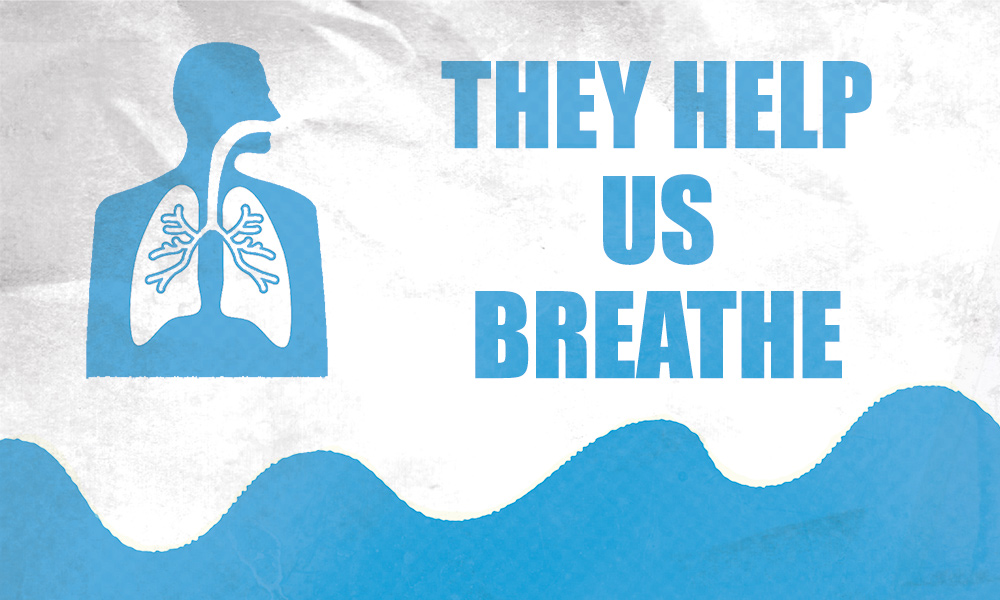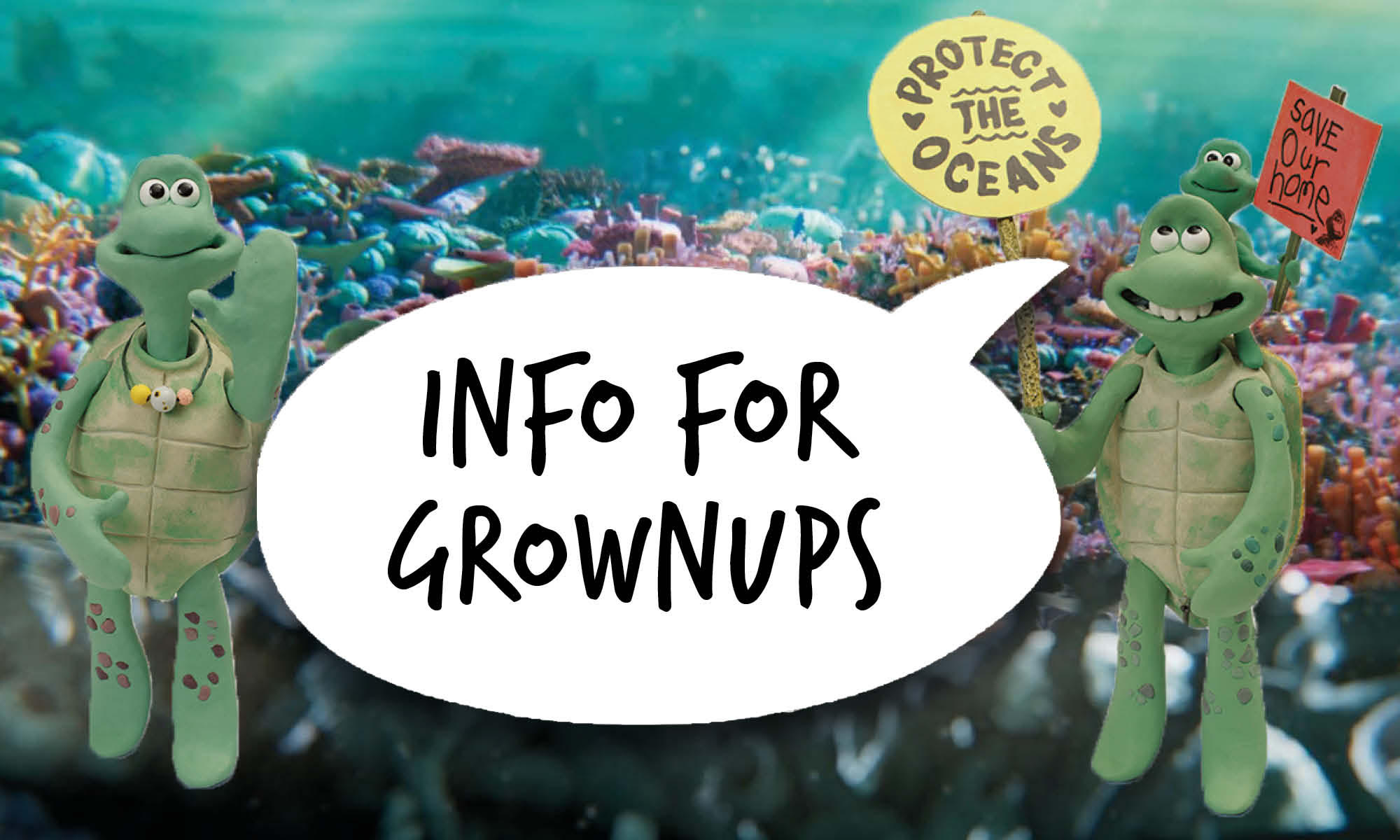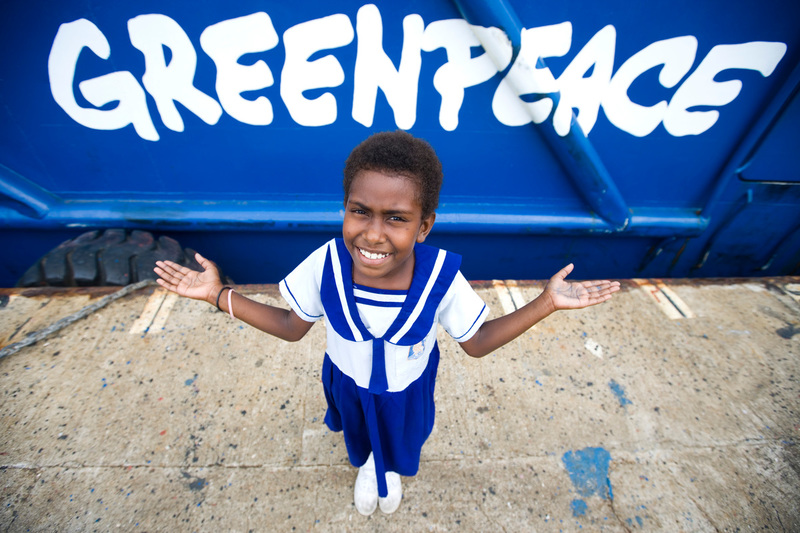
Join us on a journey through the oceans. We’ll meet a turtle family, discover what makes their home special and why it’s threatened. This journey will equip you for an important task! To create a poster that will persuade friends, families and neighbours that our oceans need saving. (Jump to info for grownups)
Wherever you see a black and white audio player like the one below, you can hit play to listen to a recording of the words while you read along.
Meet the Greens
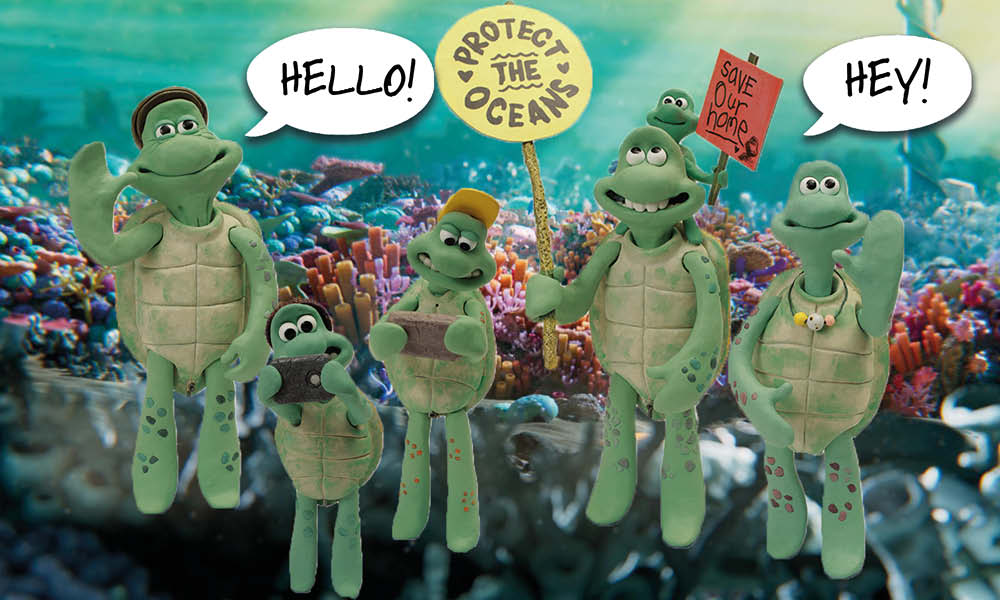
Say hello to the Greens! They are a family of green sea turtles. We will join them on their journey home from visiting their grandparents. First, the Greens would like to show you why their home, the ocean, is so special.
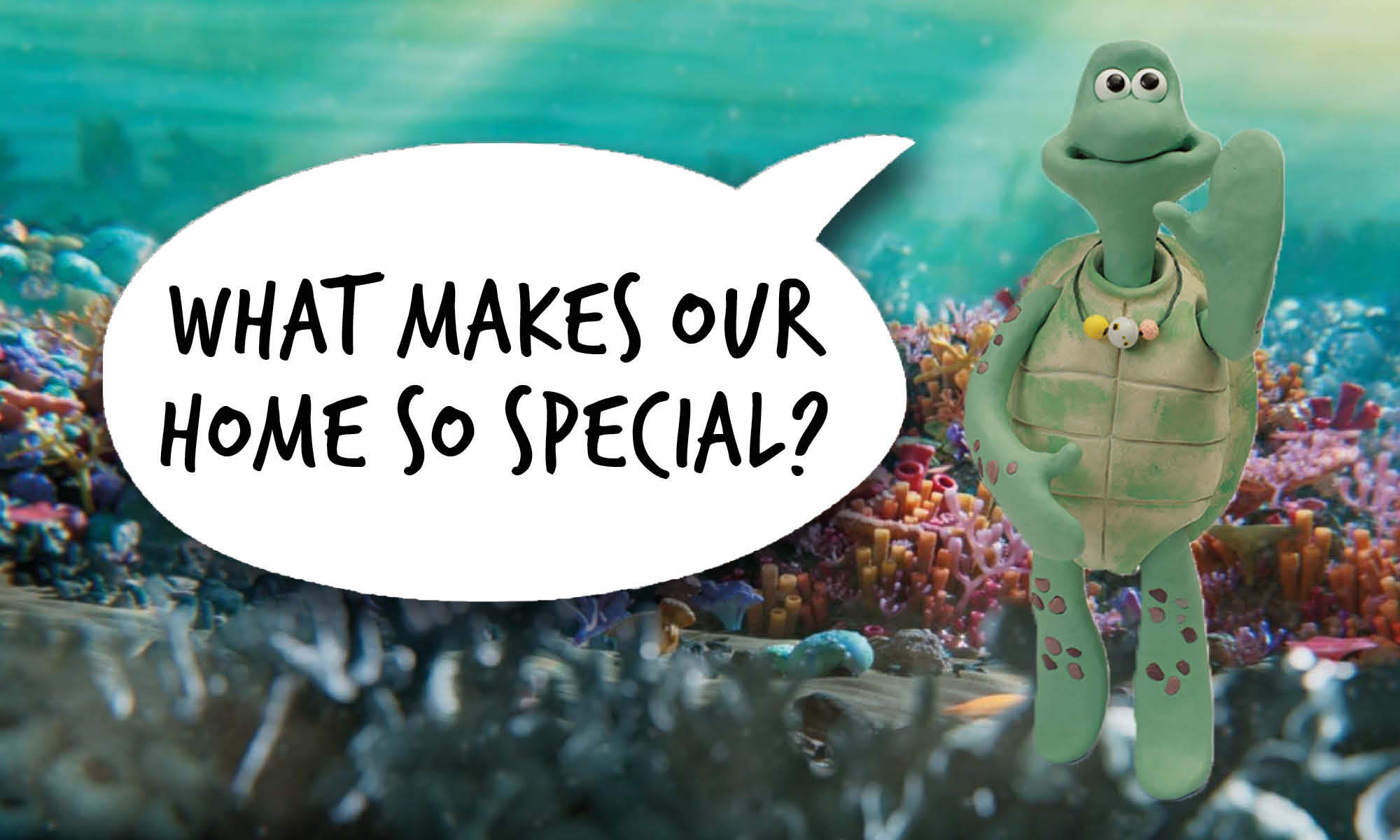
There are lots of reasons why the oceans are important to everyone, including humans! Here are just a few of them:
Half the oxygen we breathe comes from the oceans. That’s every second breath you take!
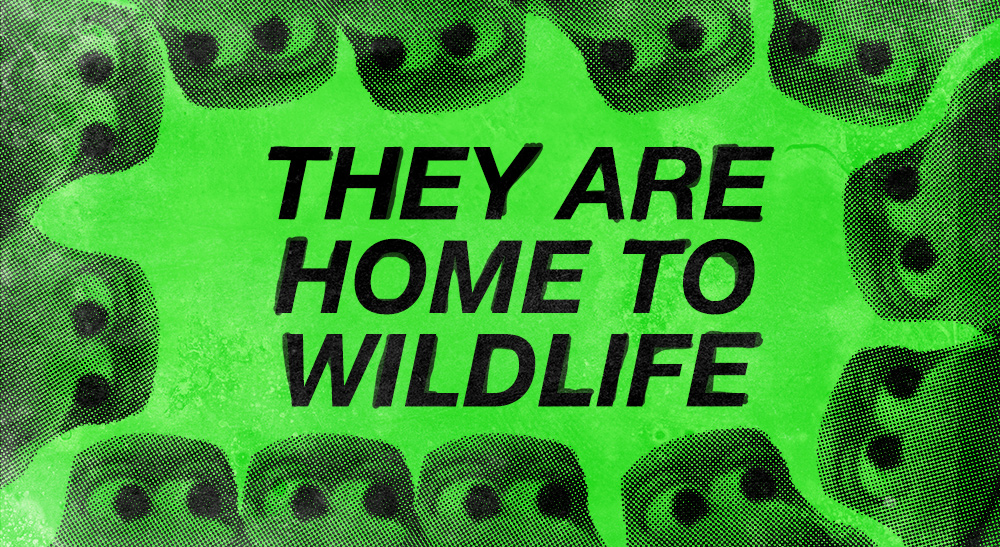
The oceans are a habitat to 80% of the creatures that live on Earth. This means that 8 out of every 10 plants or animals rely on the oceans to survive.
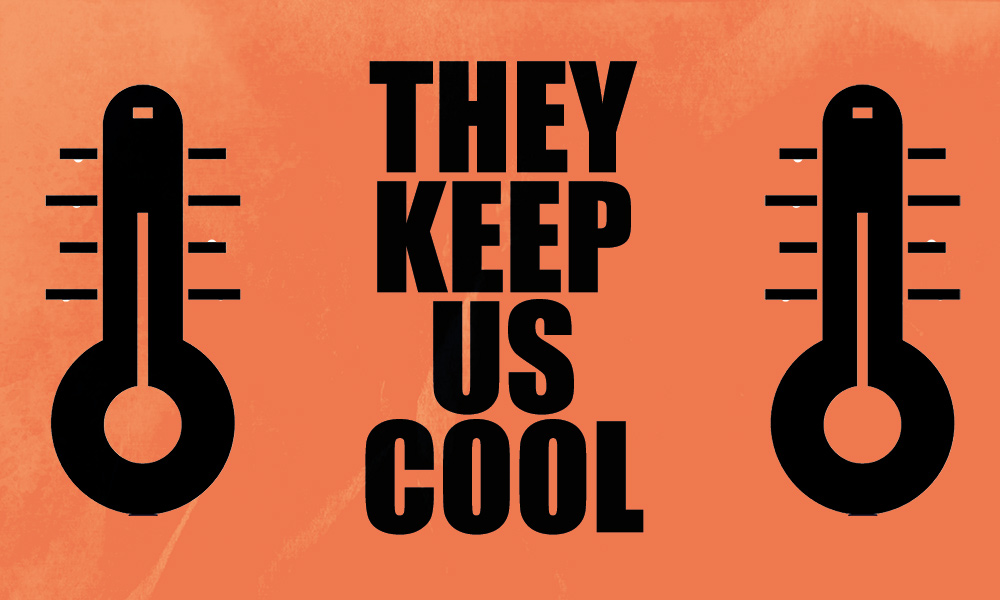
The oceans stop the Earth from getting too hot by absorbing dangerous gases, like carbon dioxide, which heat up the atmosphere. Without the oceans, lots of places would be too hot to grow food or even live in!
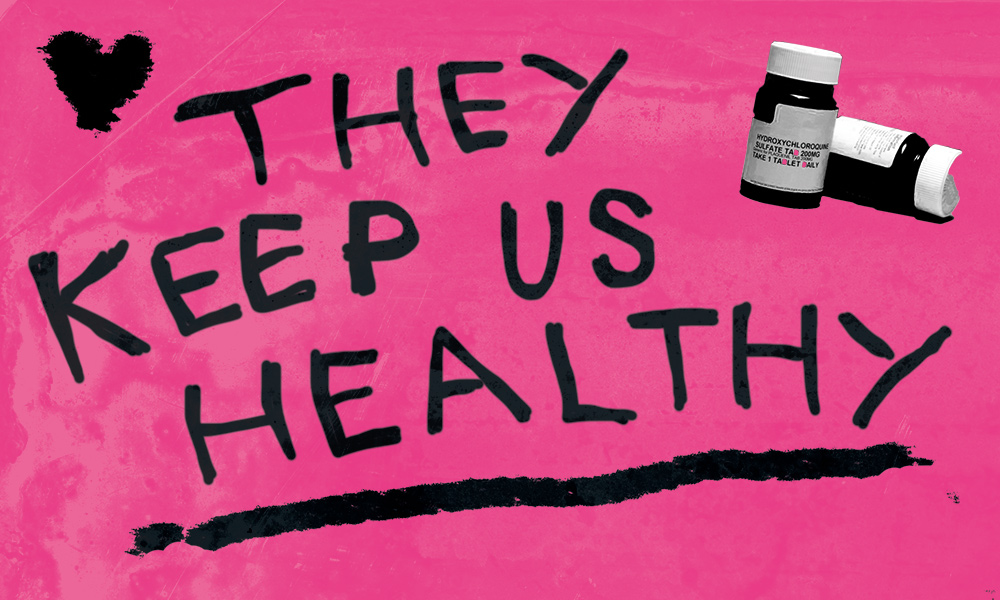
The oceans provide us with ingredients to make many life-giving medicines.
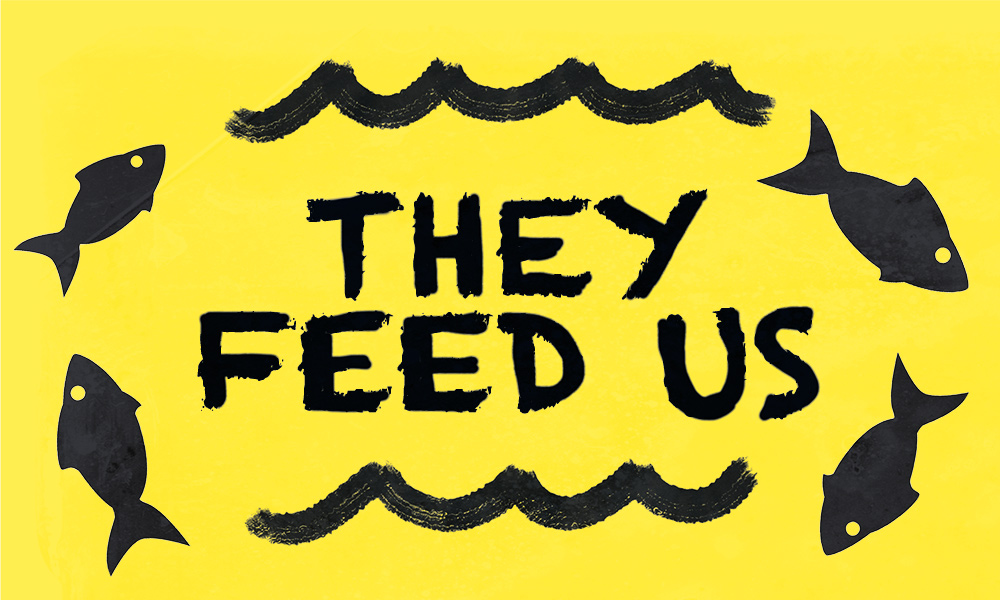
The oceans provide lots of people around the world with an abundance of food. Many different species of fish, like mackerel and herring, and shellfish, like crab, come from the oceans.
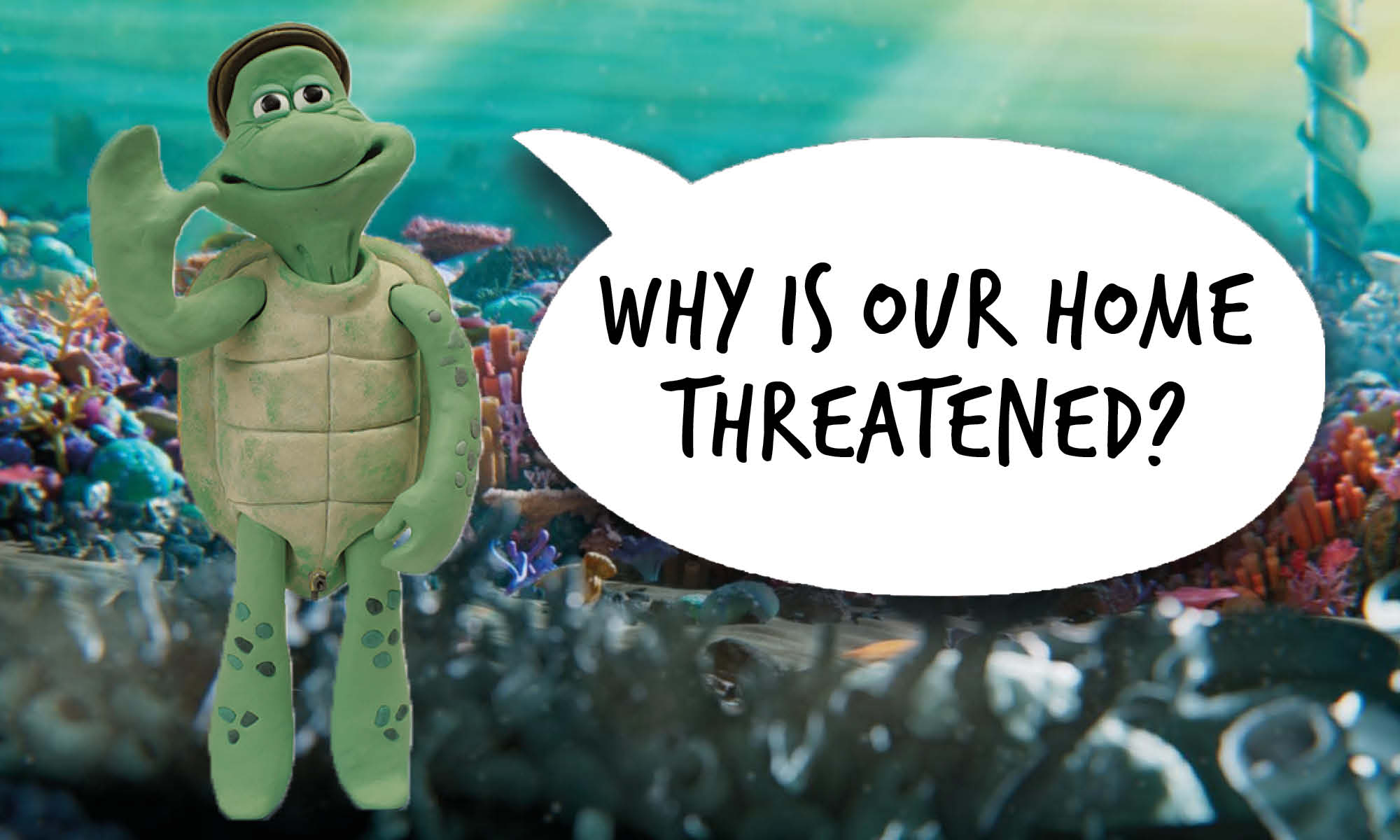
Wow! The oceans are really important to everyone on Earth. However, they’re at risk from things like:
🥤 Plastic pollution
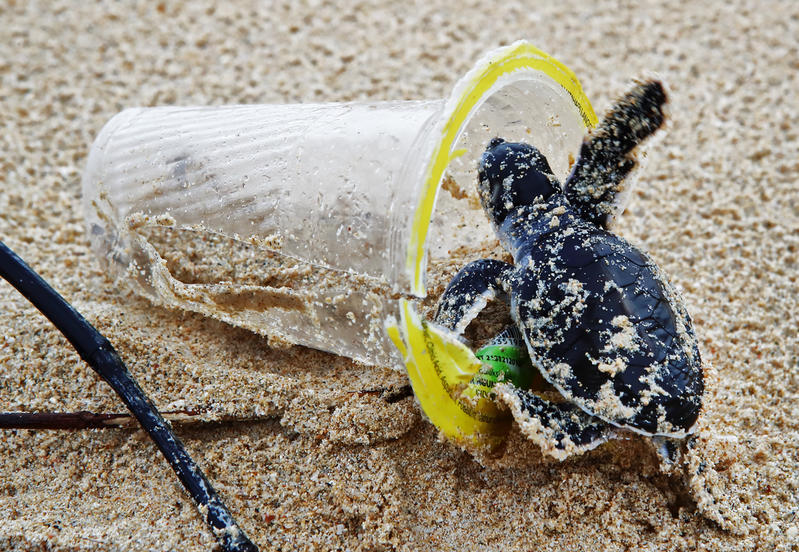
Every minute a truck-load of plastic is dumped in our oceans. Turtles, like the Green family, get tangled in plastic waste or mistake it for food! They can become sick and even die.
🎣 Destructive fishing
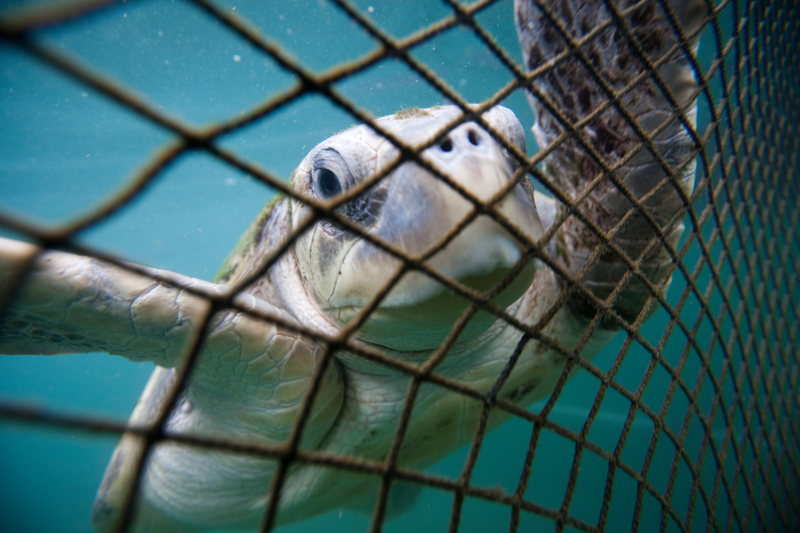
Gigantic fishing boats are a huge threat to precious marine animals, like dolphins. This is because they accidentally get caught in their massive nets which also smash up their homes, just like the Greens’ house!
🛢️ Drilling for oil
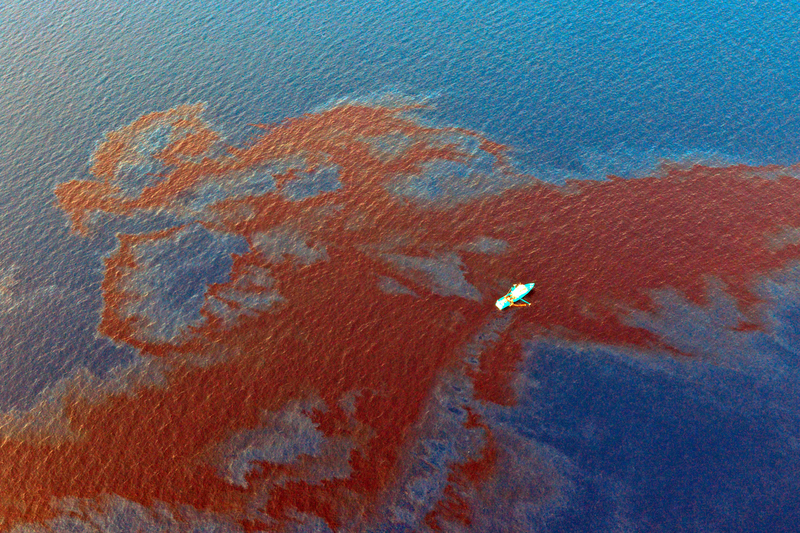
Big companies drill into the ocean floor to take out oil. This oil can leak into the water, poisoning lots of sea creatures. When burnt, this oil also releases pollution into the atmosphere which is making climate change worse.
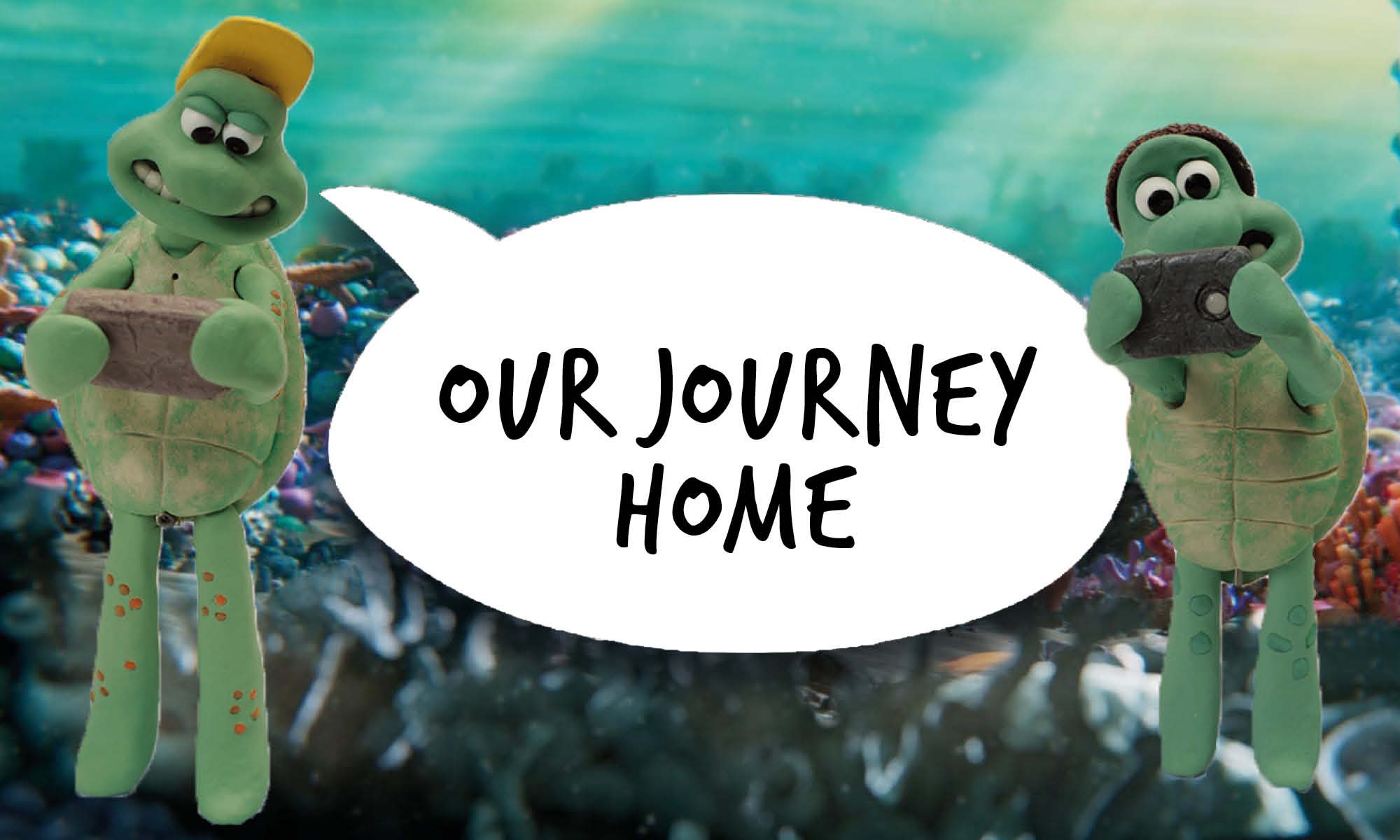
Let’s join the Greens on their journey. While you watch, can you spot any of the threats to the oceans? You might like to write your answers down.
Now you’ve watched the film, let’s think about the Greens’ journey. You can answer the questions below by getting some plain paper and a pencil, or saying them out loud.
How did the film make you feel?
“The film made me feel…………………………………..…….”
Why do you think it made you feel this way?
“I felt this way because……………………………”
How do you think the Greens might have felt?
“I think the Greens felt………………………………………..”
What surprised you most during the film?
“I was surprised that………………….”
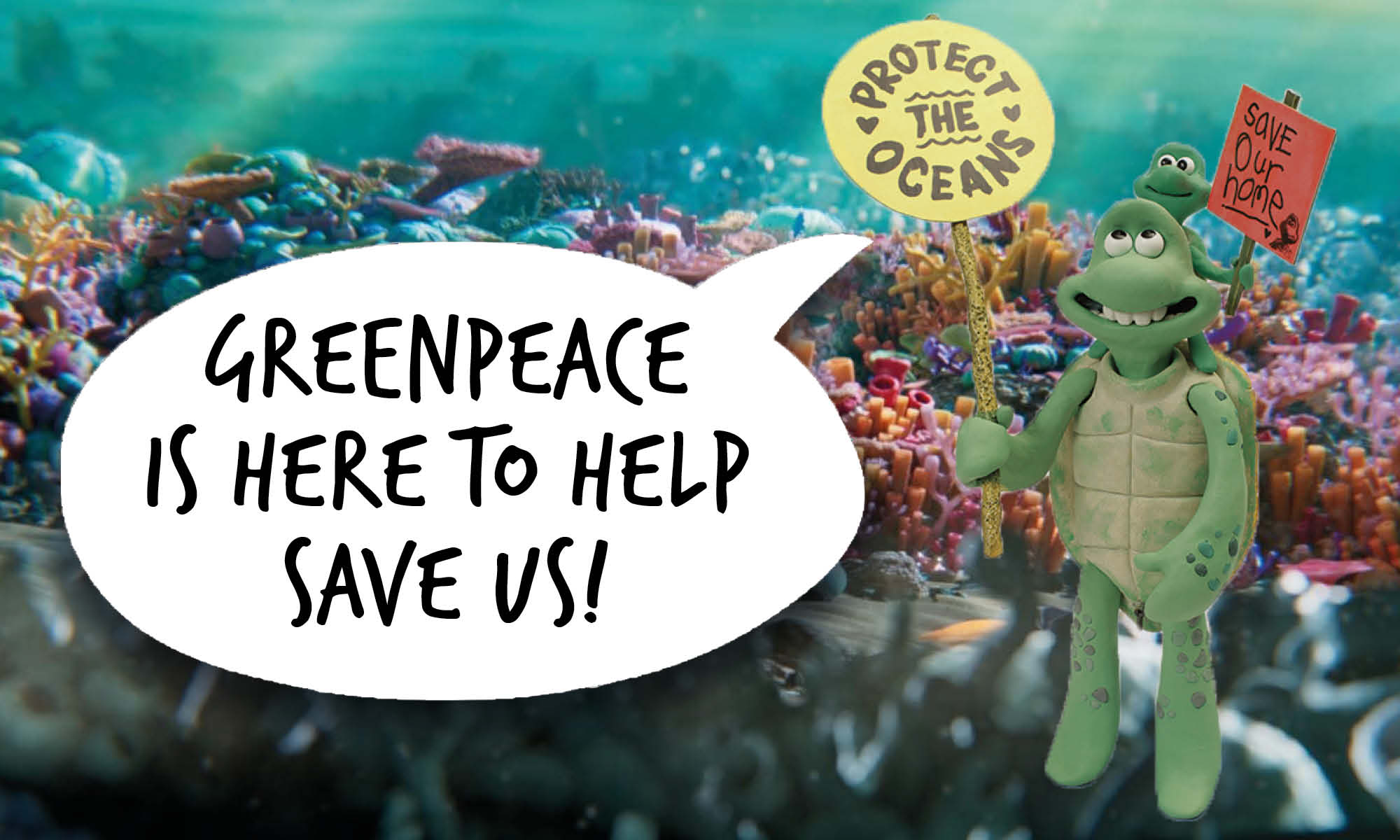
Our oceans are in trouble. You might be worried there is no solution? But don’t! Greenpeace has a plan to protect our oceans and all the creatures in it.
Greenpeace is an environmental group that works hard to protect people, animals and plants all over the world. We hate seeing our planet being destroyed so we look for solutions. Millions of people everywhere support Greenpeace’s work. That’s how we have been able to work with experts to find a way to save the oceans.
The solution is to create Global Ocean Sanctuaries.
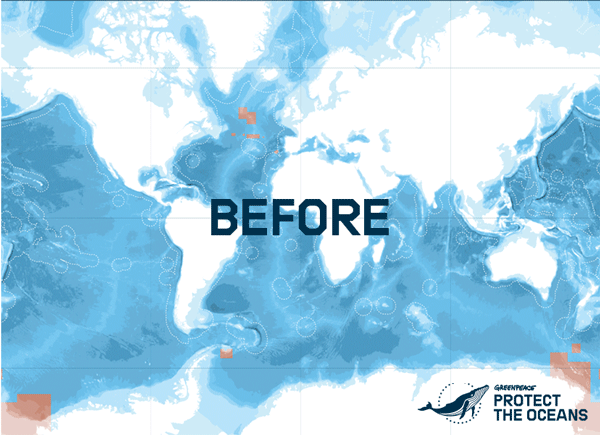
This map shows how many ocean sanctuaries there are now, and how many more there could be. All the red areas marked on the map show where global ocean sanctuaries would be created.
But what is a Global Ocean Sanctuary?
It’s a large part of the ocean that is kept safe from damaging activities. This means no destructive fishing, no oil drilling and no dumping of chemicals or rubbish like plastic. Instead, dolphins, whales, penguins and turtles can live much happier lives. Imagine how different the Greens’ journey home would have been if they lived in a Global Ocean Sanctuary?
Soon, there will be an important meeting. Governments from all over the world will decide if we should make many more Global Ocean Sanctuaries. It is important that as many people as possible know the importance of Global Ocean Sanctuaries.
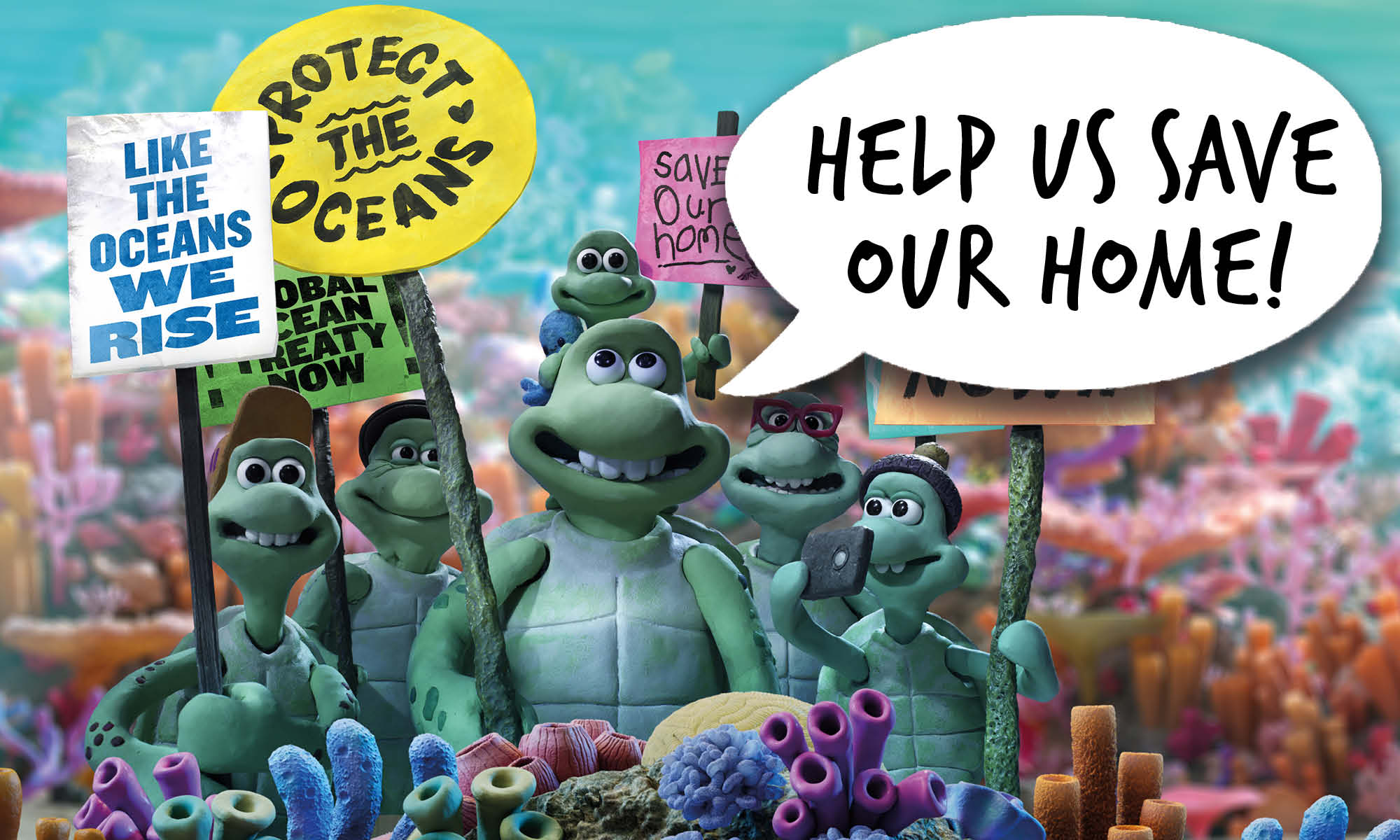
There is hope for the Green family’s home, but we need your help!
What is my challenge?
Your challenge is to make an eye-catching poster to persuade your friends, families and neighbours that the oceans need our protection. Show them your poster and talk about what you’ve learnt, especially what is being done to protect the oceans.
Sharing your knowledge and showing that you care will help them want to protect the oceans too. The more people who care, the more we can protect our oceans.
What will I need?
You will need:
- A sheet of plain paper or card
- A pencil or pen
It is your choice what materials you use to make the poster. Here are some suggestions:
- Colouring pencils
- Felt tips
- Paints and a paintbrush
- Old paper (this could be magazines, food wrappers or gift wrap)
- Natural items, like leaves and flower petals, from outside
- Scissors
- Glue
What could I include?
A good persuasive poster will have pictures that grab the audience’s attention. For example, the pictures might show what is fantastic about the oceans, how the oceans are being destroyed or what people can do to help save the oceans. Think bold and eye-catching designs.
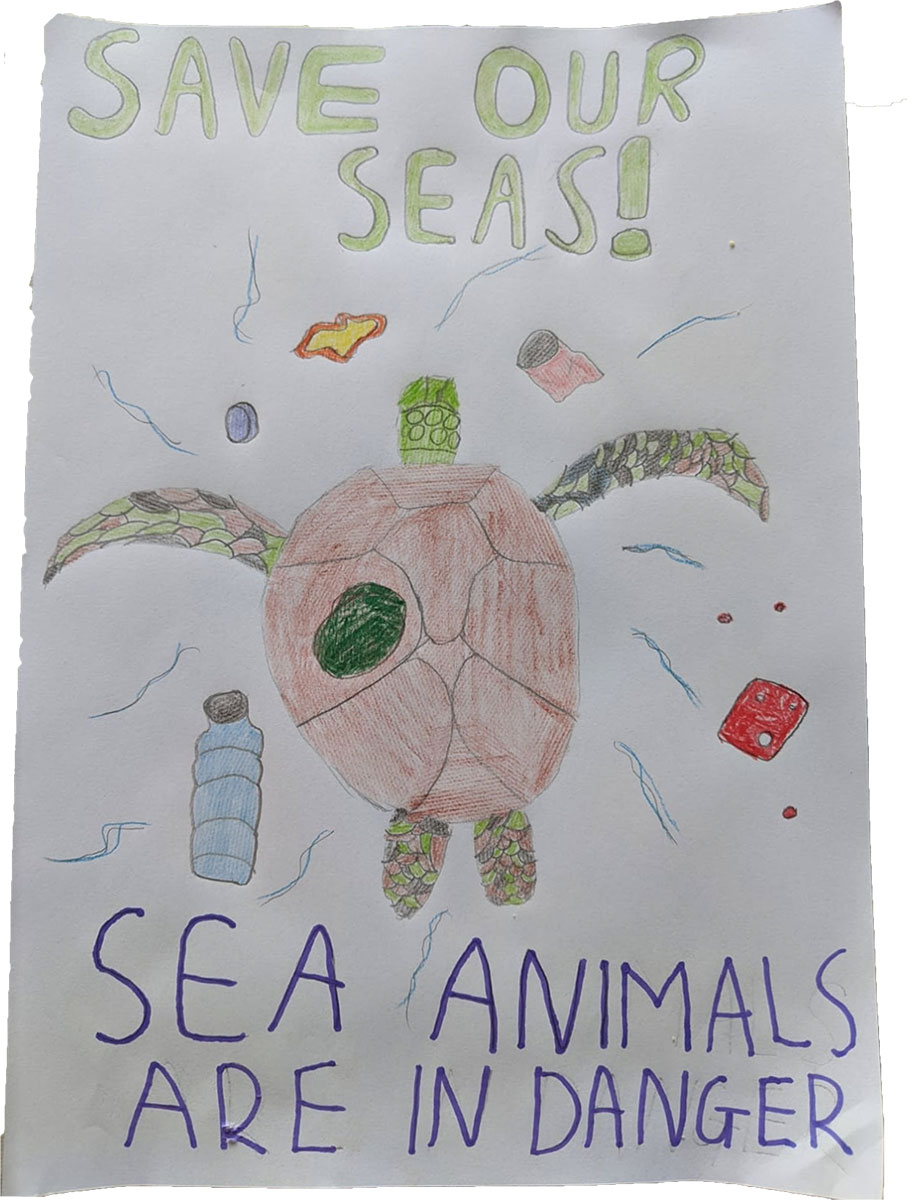
A good persuasive poster will have short powerful phrases.
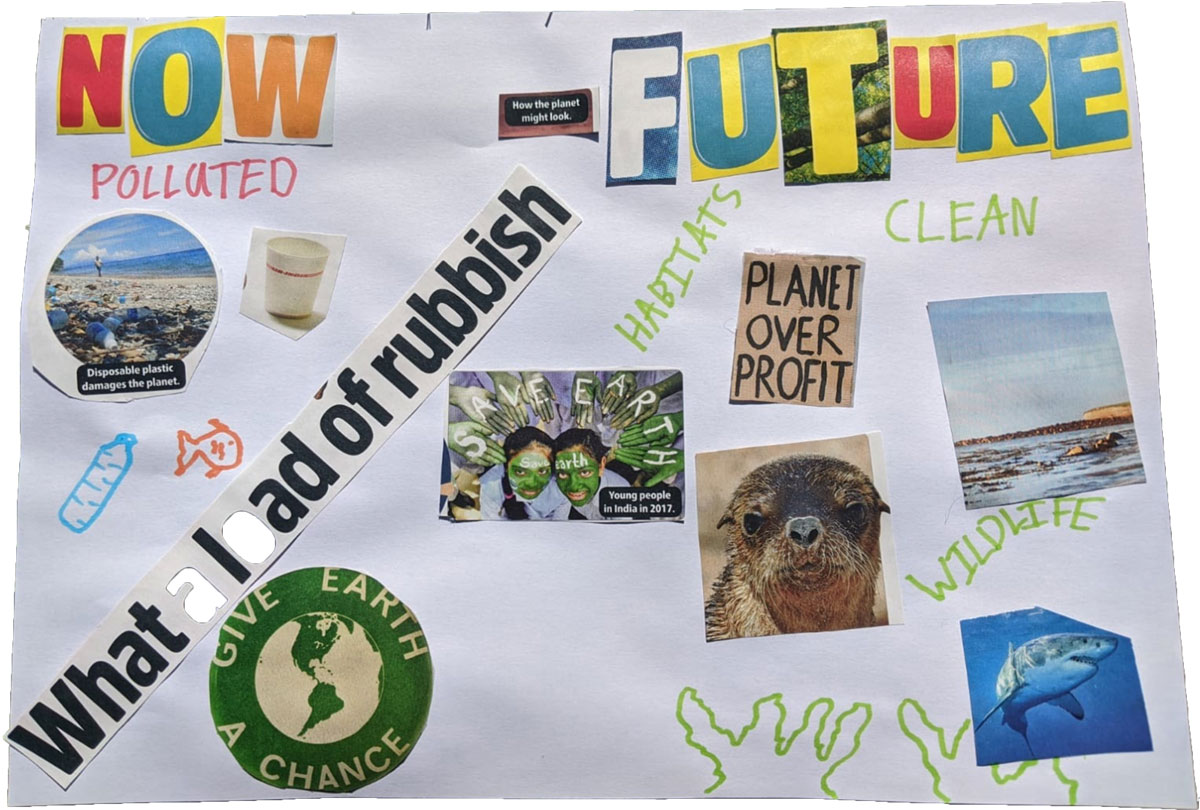
It is important to have a message that catches your audience’s attention. You could use some of the techniques below to make yours stand out.
- Strong adjectives – fragile, precious, magnificent, shocking
- Rhetorical questions – Can you help protect our oceans?
- Powerful verbs – save, stop, protect, destroy, help, rescue
- Alliteration – Sanctuaries for Survival!
Other great words you might use are: oceans, homes, wildlife, global oceans sanctuaries.
Examples of powerful phrases you could use are: ‘Oceans Need Heroes! Can you be one of them?’ or ‘We need global ocean sanctuaries now!’
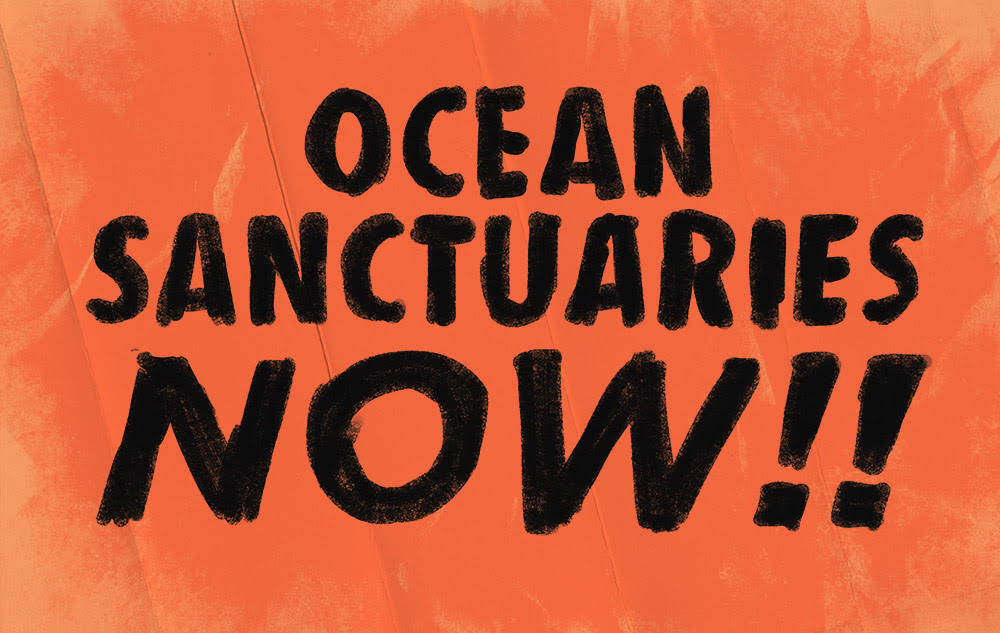
What should I do with my poster?
Share it with your friends, families and neighbours and talk about the importance of protecting our oceans.
Greenpeace has created an online gallery to show the posters people have made. If you’d like your poster to persuade more people to protect the oceans, ask your parents, carer or teacher to take a photograph. Then they can send it to myphoto.uk@greeneace.org. We’ll put lots of the photos in the gallery. It is important to get their permission to send the photo.
We can’t wait to see all your ideas. Each one will help to spread the word to Protect our Oceans.
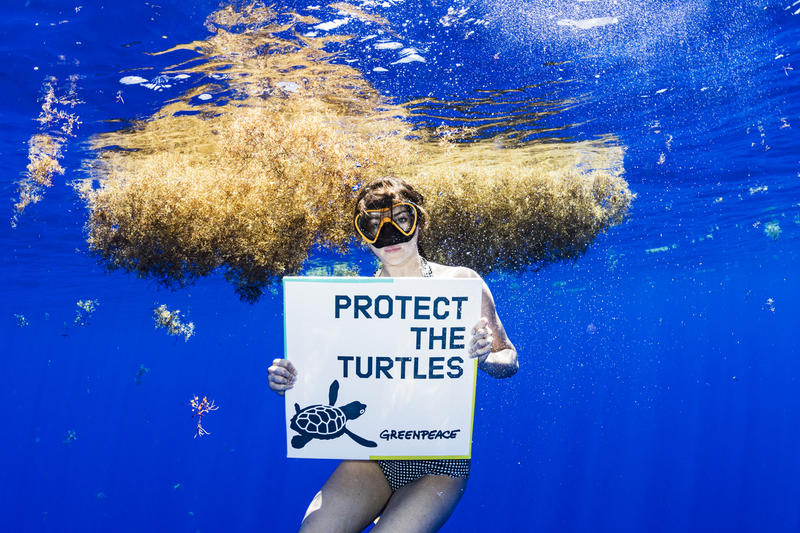
Top turtle facts🐢 Sea turtles have been living on the earth since the time of the dinosaurs. 🎁 Sea turtles can live as long as a century (that’s 100 years) in the wild. 🐣 Less than 1 in 1,000 hatchlings will survive to be an adult. It’s really tough being a baby sea turtle! 💔 6 out of 7 species of sea turtle are threatened with extinction. |
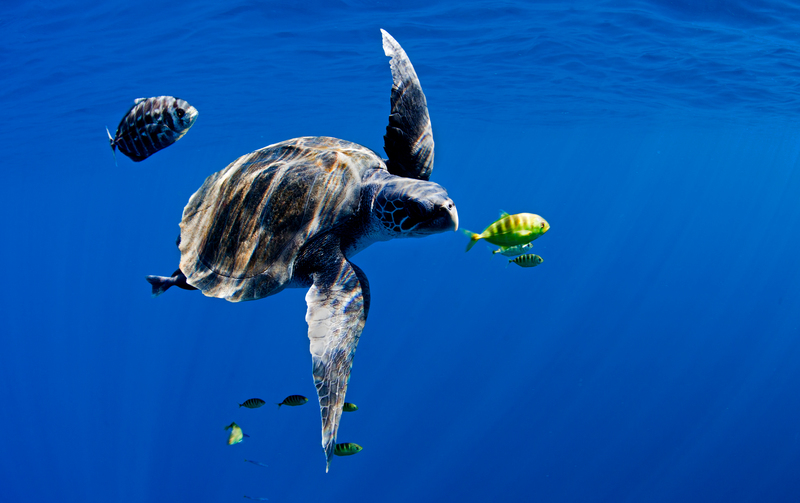
Glossary
Atmosphere: the layer of gas (air) surrounding the Earth.
Extinction: the dying out of a species from the Earth.
Global Ocean Sanctuary: a place in the ocean where no destructive human activities take place.
Habitat: the natural place where a plant, animal or other organism lives.
Species: a group of animals, plants or other living things that all share common features and are able to reproduce together.

